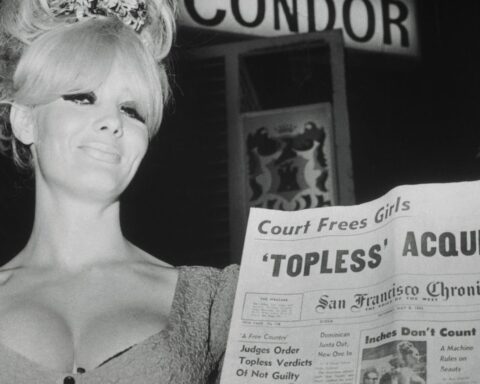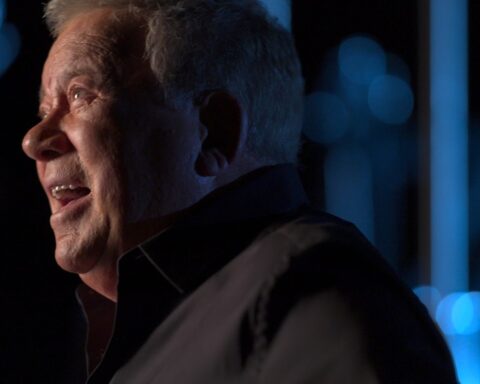Hitler’s Hollywood
(Germany, 105 min.)
Dir. Rüdiger Suchsland
“What kind of a nation is it that needs poets to be able to kill and to die?” asks Udo Kier in voiceover in Hitler’s Hollywood. This comprehensive slice of film history asks difficult and relevant questions. How audiences of the present make sense of the films of the past is a discussion worth having, particular as movie buffs consider how to contextualize influential films that one can no longer celebrate without awkwardness or political correctness. Hitler’s Hollywood is as thorough and informative as a Master Class seminar, if as dry as Melba toast, and the collage of classic images presents snippets of film history that are both beautiful and unsettling. Sometimes the question isn’t one of separating the artist from the art, but one of (re)considering the work’s place in history. This doc by Rüdiger Suchsland navigates a tricky chapter of film history thankfully without celebrating it.
Hitler’s Hollywood gives an in-depth survey of the machinery of Nazi propaganda. Kier guides the quickly paced film in a soft-spoken voiceover that contextualizes the ideological force of the pictures that filmmakers cranked out under the guidance of Joseph Goebbels, Hitler’s Minister of Propaganda. As expected, there are images of blue-eyed Germans with blond hair, idealized by the Nazis as the perfect specimen of the human race, and the film makes a startling reminder of the necessity of diverse on screen representation. Casting matters, particularly when roles put characters in dichotomies of strength and weakness. Each clip is a document of cultural genocide with the erasure of Jews and other groups Hitler deemed undesirable.
Suchsland’s doc explains how the basic function of propaganda is to permeate the minds of viewers with subliminal messages, rather than punch them in the face with obvious slogans. Hitler’s Hollywood surveys the basic elements of iconography that reinforced the Third Reich’s aim. By looking at a sea of Aryan actors, images of bodily perfection, towering composition of soldiers in solidarity, or strong patriarchal figures commanding authority, Kier explains how elements of each frame normalized Nazi ideology into the status quo. Rousing songs were also frequent to create emotional connections to the regime. The doc cites cultural theorists like Siegfried Kracauer and puts academic consideration into terms accessible for wide audiences as Suchsland surveys a large body of work. The observations of Hitler’s Hollywood might not be penetrating for viewers well versed in film analysis or history, but the doc, like an earnest university professor, prepares viewers with the foundational knowledge for the discussion.
The most significant chapter of the film looks at Leni Riefenstahl’s landmark documentary Triumph of the Will. The 1935 film remains overwhelming today, presenting the sheer scope of the Nazis’ presence. The film intimidates with its compositions that emphasize the strength and scale of Hitler’s army while Riefenstahl’s frames liken Hitler to a pop idol adored by the masses. One can see how the film was so influential in putting Germans under Hitler’s spell. Even with just a few clips of Triumph of the Will, it’s hard to watch the footage without shaking off a chill. Suchsland’s documentary unpacks how filmmaking has the power to contribute to the deaths of over six million people. The film has the decency to omit the question of artistic merit but illustrates how a text retains historical significance with the proper context.
Perhaps more surprising is the range of genres that appears in Hitler’s Hollywood. Not every piece of Nazi propaganda was Triumph of the Will or Nation’s Pride. Outside of the bombastic showings of Nazi machismo, Suchsland finds a German remake of Frank Capra’s slapstick romance It Happened One Night and an Ingrid Bergman film that the Hollywood icon would rather see lost to history. Hitler’s Hollywood examines how the different tones and stories ensured that propaganda enveloped audiences from different angles and was inescapable for anyone going to movies on Nazi screens.
While the film runs far too long and Kier’s narration sometimes borders upon inaudible, Hitler’s Hollywood gives audiences lots to digest on the power of images. The doc navigates film history to articulate an informative reminder on the necessity of media literacy. Not everyone needs to take a Film 101 course to understand the difference between real images and fake ones, but Suchsland’s doc prompts audiences to recognize that the best viewer is an active one.
Hitler’s Hollywood opens Friday July 20 at Hot Docs Ted Rogers Cinema and is available on home video.











